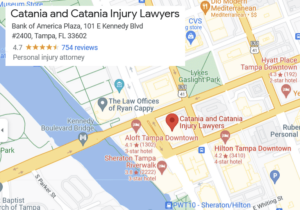
If you have been injured in an accident because of someone else’s conduct, then you may be eligible to file a negligence case.
If you are successful in your negligence case, then you can win money damages for your losses.
To win your negligence case, you will need to show that your injuries were caused by someone else’s conduct.
Table of Contents
Standard Elements Required in a Personal Injury Case
Personal injury cases are often brought under the legal standard of negligence. Negligence requires proof of four main elements:
- Duty: A person owed you a legal duty of care;
- Breach: That person breached their duty of care;
- Causation: Their breach caused you injuries; and
- Damages: The injuries resulted in financial losses
You must establish all four elements to win your injury case. One of the main issues that are often contested is “causation.”
For causation, you have to prove that the person you are suing actually caused your harm. This sounds simple. However, if you are unable to demonstrate the defendant “directly and proximately” caused your injuries, you won’t win your negligence case.
What is Causation?
Causation requires you to prove that a person caused your injuries through their acts of failure to act. For example, if you have been hurt in a car accident, then you might think it’s obvious that the other driver caused your injuries. However, there could be several factors that may be the direct cause of an accident, even if they aren’t immediately apparent.
Causation has two prongs: cause in fact and proximate cause. The defendant’s conduct has to meet both definitions to be the cause of your accident.
Defining Cause in Fact
You will have to demonstrate that the person you are suing was the “cause in fact” of your injuries. You must demonstrate that your injuries would not have happened “but for” the person’s negligent conduct.
For example, say a driver runs a stop sign and hits your car at an intersection. You would not have gotten hurt “but for” the driver running the stop sign and colliding with your car. Accordingly, the driver failing to stop at the stop sign is the cause in fact of the injury.
Defining Proximate Cause
The defendant will not be held liable for every harm you suffer after an accident, no matter how remote. To prove proximate cause, you will have to demonstrate that the injuries you suffered were a foreseeable result of the defendant’s conduct.
Proximate cause is concerned with fairness. It seeks to limit the defendant’s liability to losses that are connected with their conduct. It won’t allow a plaintiff to hold a defendant responsible for losses that are remote and unrelated to the defendant’s acts or omissions.
Therefore, you must prove that your injuries and losses were foreseeable. In most cases, this task may be easy. However, each case has its own set of facts and circumstances, so proximate cause may be subject to debate. To win your negligence case, you will need to prove that the defendant was both the cause in fact and proximate cause of your injuries.
The Importance of the Case of Palsgraf v. Long Island Railroad
Palsgraf v. Long Island Railroad provides an example of proximate cause and foreseeability. The events of this case took place in 1924, when a man was trying to board a train that had already started to move. Two railroad employees attempted to help the man aboard the train as it was moving.
As he was trying to board, the man dropped a package that contained fireworks. The fireworks exploded when they hit the ground. A heavy set of scales on the other side of the station fell on a woman (Palsgraf) and caused her injuries.
The woman sued the railroad for causing her injuries. This case made it to the Supreme Court. However, the Court found that the woman’s injuries were not a foreseeable consequence of the railroad guards trying to help the man board.
Comparative Negligence in Florida
Florida law operates under the pure comparative fault standard. Pure comparative fault is the most forgiving fault standard in negligence cases.
Comparative negligence allows you to recover damages for your injuries even if you contributed to your accident. In other words, you can be a partial cause of your own injuries and still recover compensation so long as someone else bears responsibility also. However, courts will reduce your damages to account for your share of fault.
Contact A Tampa Personal Injury Lawyers for Help
If another’s negligence has harmed you, then it is important that you speak with an experienced personal injury lawyer. Understanding what kinds of claims are available to you can help you recover the maximum compensation.
Our attorneys at Catania & Catania Injury Lawyers can help you understand the elements of negligence, especially causation. Contact our law office in Tampa, Florida online or give us a call at (813) 222-8656 to discuss your case.




